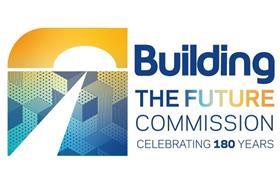National Retrofit Hub chair said categorising schemes by building type was the only way to bring down costs
Standardising retrofit works in privately owned properties is the only way to persuade homeowners to pay for the work, the chair of the National Retrofit Hub has said.
Lynn Sullivan (pictured) said categorising building types to bring down costs would be the only way to get economies of scale.

Speaking at today’s Building the Future Commission conference in London, Sullivan said: “We believe that if we can look at the stock in terms of the characterisation and open up new opportunities for economic propositions for privately owned stock, then that’s the only we can do it to get some level of standardisation and packaging to get economies of scale.”
She added: “We’ve got to try and understand where the linkage is in order to make more of the standardisation to retrofit, because that’s the only way we’re going to bring costs down, because i don’t think any of us thinks that any government will pay for all privately owned stock to come up to net zero.”
It comes two weeks after Rishi Sunak downgraded the government’s net zero goals to make around five million homes which would struggle to pay for energy efficiency retrofits exempt from a ban on gas boilers after 2035.
Sullivan also said there had been an “evolution of our definition of beauty” in buildings due to an increased focus on energy efficiency.
She suggested that design aesthetics had gone on a “massive red herring” in the 20th century following the invention of air conditioning, and that it had “completely skewed our aesthetic judgement”.
She said: “Buildings are much more subtly done now, with nicely integrated shading because that’s absolutely key to dealing with a warming climate and the health and wellbeing of occupants. So i do see that aesthetic judgement changing and that to me is very exciting.”
About the commission

The Building the Future Commission is a 12-month project looking at radical and challenging ideas that could help transform the built environment.
The campaign aims to tap into innovative ideas, amplify them and be an agent for change.
The major project’s work will be guided by a panel of major figures who have signed up to help shape the commission’s work culminating in a report published at the end of the year.
The commissioners include figures from the world of contracting, housing development, architecture, policy-making, skills, design, place-making, infrastructure, consultancy and legal. See the full list here.
The project is looking at proposals for change in eight areas:
- Education and skills
- Housing and planning
- Energy and net zero
- Infrastructure
- Building safety
- Project delivery and digital
- Workplace culture and leadership
- Creating communities
>> Editor’s view: And now for something completely positive - our Building the Future Commission
>> Click here for more about the project and the commissioners
Building the Future is also undertaking a countrywide tour of roundtable discussions with experts around the regions as part of a consultation programme in partnership with the regional arms of industry body Constructing Excellence. There is also a young person’s advisory panel.



























No comments yet